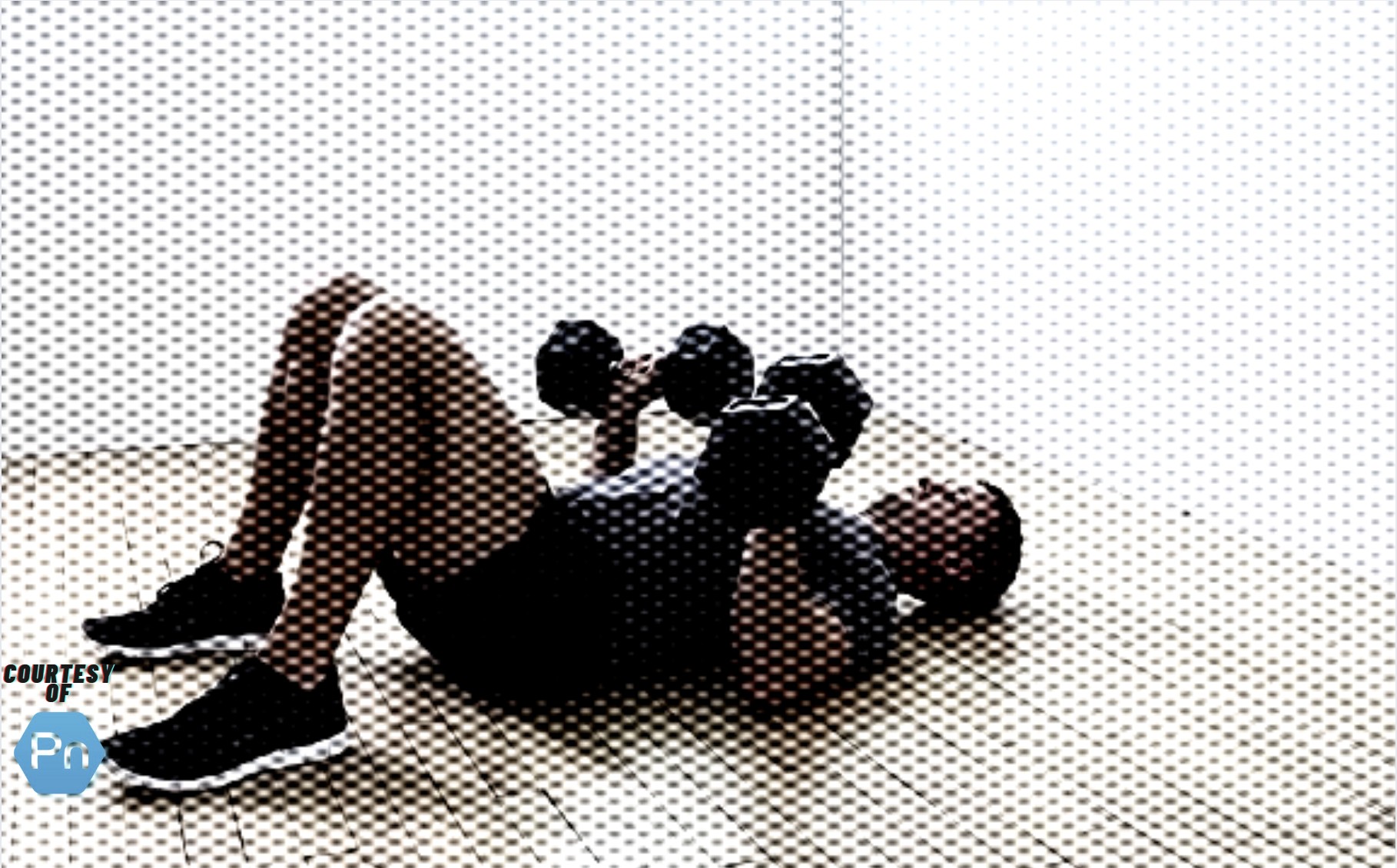No bench? No problem. The dumbbell floor press is the underappreciated hero of chest training. It’s simple, it’s effective, and—bonus—you don’t need expensive equipment to make gains. If you’re serious about building strength while keeping your shoulders safe, this is the move you’ve been missing. Let’s unpack why it works, how to nail your form, and a few rare tweaks to level it up.

The dumbbell floor press is like the street-smart cousin of the bench press—no fancy setup, just raw, gritty power. It’s the backyard brawl of chest exercises, where your triceps, pecs, and shoulders team up to shove the weight skyward. The floor keeps you honest—no cheating with extra bounce or overextension. It’s all about controlled power, like a mechanic cranking a wrench with precision. Push those dumbbells up, and it feels like you’re pressing the weight of the world off your chest, one rep at a time.
Why Train on the Floor?
You might be wondering, Why ditch the bench? Training from the ground has benefits you won’t get from other chest exercises.
The Big Wins of This Move
| Benefit | What It Means for You |
|---|---|
| Shoulder Safety | Limits range of motion to protect your shoulders from overextension and injury. |
| Enhanced Triceps Engagement | Forces your triceps to work harder during the lockout phase of the press. |
| Core Stability | Lying flat forces your core to stabilize, preventing excess arching in your lower back. |
| Minimal Equipment Needed | All you need are dumbbells and a flat surface to get the job done. |
Performing Dumbbell Floor Presses
Step-by-Step Execution
- Grab Your Tools:
Choose a pair of dumbbells that challenges you but allows you to maintain control. - Set Up Your Position:
- Lie flat on the floor with knees bent and feet planted.
- Hold the weights above your chest with palms facing each other (neutral grip) or slightly turned out.
- Rest your upper arms on the floor at a 45-degree angle from your body.
- Lower with Control:
Slowly bring the weights down until your elbows gently tap the ground. Keep tension in your chest and triceps. - Press Back Up:
Drive the dumbbells upward, locking out your elbows at the top while squeezing your chest. - Rinse and Repeat:
Perform 8–12 reps for 3–4 sets, depending on your goals.
Floor Press Variations for Bigger Gains
Ready to take it up a notch? These rare variations will challenge your strength, stability, and control.
1. Single-Arm Floor Press
- Why It Works:
Performing the press one arm at a time forces your core to stabilize, reducing strength imbalances. - How To:
Use one dumbbell and keep your free arm extended for balance. Press and control the weight, one side at a time.
2. Glute Bridge Floor Press
- Why It Works:
Combining a glute bridge with the press activates your core, glutes, and hamstrings while still hitting the chest. - How To:
Hold a bridge position (hips lifted, core braced) while pressing the dumbbells. Don’t let your hips drop!
3. Tempo Floor Press
- Why It Works:
Adding a tempo (e.g., a 3-second descent) increases time under tension, triggering muscle growth and control. - How To:
Lower the weights slowly for 3–4 seconds, pause briefly at the bottom, and then explode upward.
Common Mistakes That Kill Your Gains
Don’t let sloppy form sabotage your progress. Watch out for these common pitfalls:
- Bouncing Your Elbows: Letting your arms crash to the floor removes tension and risks injury. Tap the ground lightly—no slamming.
- Overarching Your Back: Keep your lower back pressed into the floor to maintain core stability.
- Elbows Flaring Out: Keep your elbows at a 45-degree angle to avoid shoulder strain.
Progression Plan: From Beginner to Advanced
Here’s a clear roadmap to level up your strength:
| Level | Exercise | Sets x Reps |
|---|---|---|
| Beginner | Standard Dumbbell Floor Press | 3 x 10–12 |
| Intermediate | Single-Arm Dumbbell Press | 3 x 8–10 per side |
| Advanced | Tempo Floor Press (3-sec descent) | 3 x 6–8 |
| Elite | Glute Bridge Dumbbell Press | 4 x 8–10 |
Pro Tips to Maximize Results
- Use a Neutral Grip: Keeping your palms facing each other minimizes shoulder strain.
- Mind the Weight: Go heavier than you would on a bench press—your range of motion is shorter, so you can handle it.
- Focus on the Lockout: Squeeze your chest and triceps hard at the top for maximum muscle engagement.
How It Compares: Floor Press vs. Bench Press
Here’s how these two exercises stack up:
| Aspect | Floor Press | Bench Press |
|---|---|---|
| Range of Motion | Shorter (elbows stop at floor) | Full range (bar to chest) |
| Shoulder Stress | Minimal—great for injury prevention | Higher stress, especially at deep stretch |
| Muscle Activation | More triceps involvement | More chest stretch and activation |
| Equipment Needed | Dumbbells + floor | Bench + barbell/dumbbells |
FAQs to Perfect Your Press
Q: Can I do this move if I have shoulder pain?
Yes, it’s actually one of the best alternatives to traditional presses because it protects your shoulders by limiting range of motion. Use a neutral grip for extra safety.
Q: Is this exercise good for beginners?
Absolutely. It’s simple, effective, and beginner-friendly while still delivering serious results.
Q: How often should I include this in my routine?
2–3 times per week is ideal for strength and hypertrophy, paired with other chest and triceps exercises.
The Takeaway: Simplicity = Strength
The dumbbell floor press is proof that you don’t need fancy equipment or complex moves to build serious power. It’s simple, it’s effective, and it gets the job done—whether you’re chasing strength, muscle growth, or just a rock-solid chest.
So grab your dumbbells, hit the floor, and press your way to results. No excuses—just progress.
